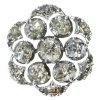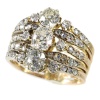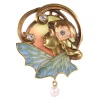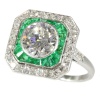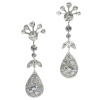We offer layaway, spread payments on the piece of your dreams. Ask us for details. Free insured shipping on all orders !!!
Laws and Regulations

The End of the Guild System
During the French Revolution, the guilds were officially abolished by the Allarde Decree of 1791, which introduced the principle of freedom of trade and industry. This marked the end of their control over gold and silver regulations. Later, under Napoleon’s rule, further reforms were implemented, transferring the regulation of gold and silverware to legislative authorities.
The Role of the Guilds
The guilds were responsible for maintaining the integrity of their respective trades. They appointed assay-masters to inspect items made from precious metals, ensuring that the correct alloy was used. Their methods were highly effective; in fact, many of their regulations were later incorporated into legislative law. As a result, the principles established by the guilds continue to influence modern regulations.
What requirements must an object made from a precious metal meet?
The criteria vary depending on the country of manufacture, the intended market, or its current location. In simple terms, the item must bear a hallmark—a practice that dates back to at least 1300, when King Edward I of England introduced mandatory hallmarking to verify silver purity.
However, the presence of a mark alone does not always guarantee authenticity. For instance, a gold mark stamped on iron would not fool many, but a gold mark on brass might be more convincing to the untrained eye. This highlights that a hallmark on its own is insufficient—hallmarking must follow specific standards, which differ across countries and historical periods.



